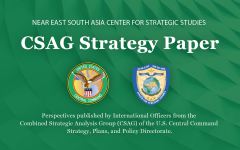Coherency of EU Foreign Policies towards the USCENTCOM AOR
April 12, 2021 2021-04-12 16:45Coherency of EU Foreign Policies towards the USCENTCOM AOR
By LtCol Arto Hirvela, FIN Army, US Central Command: Strategy Plans and Policy Directorate; Combined Strategic Analysis Group
19 Mar 2021
Introduction:
Within the USCENTCOM area of responsibility (AOR), the European Union (EU) policies towards Central and South Asia, and the Middle East are widely different and lack a comprehensive approach. While the EU published its Central Asia strategy in 2007, it has not released specific strategies for the South Asia and the Middle East regions. EU’s 2019 Global Strategy addresses all USCENTCOM AOR regions in general terms. The strategy centers on rules-based international order, international human rights and humanitarian law. The EU primarily limits AOR activities to the trade domain while its bilateral relations still form the basis for most of its diplomatic actions.
It is important to understand key external actors’ priorities and how they attempt to influence and engage with countries in the AOR. EU strategies impact partners and adversaries inside and outside the AOR. To gain an understanding of the objectives and potential impacts, this paper examines EU strategic policies and objectives towards Central and South Asia, and the Middle East.
Key Points:
- EU’s policy towards the USCENTCOM AOR is based on its 2019 Global Strategy.
- EU’s Central Asia strategy addresses sustainable energy, women’s economic empowerment, education, climate change effects, and reducing the impact of regional natural disasters.
- While the EU has formal agreements with individual South Asian countries such as India and Afghanistan, its engagement with the broader region remains limited.
- The EU has not published a specific policy for the Middle East region.
- Developing a common EU policy towards the Middle East is difficult because of the divergence among EU members and Middle East countries.
The opinions and conclusions expressed herein are those of a number of international officers within the Combined Strategic Analysis Group (CSAG) and do not necessarily reflect the views of United States Central Command, not of the nations represented within the CSAG or any other governmental agency.






